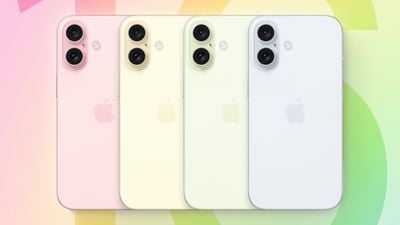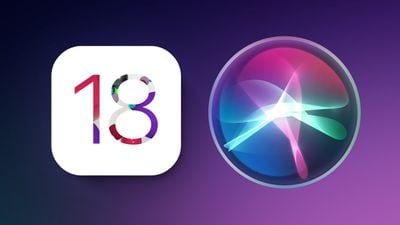[ad_1]
The iPhone is Apple’s top-selling product, and it gets an update every year. In 2024, we’re expecting the iPhone 16 and iPhone 16 Pro lineup, with an arguably more interesting feature set than we got with the iPhone 15 and iPhone 15 Pro.
Capture Button
All four iPhone 16 models are set to get a whole new button, which will be located on the right side of the device below the Power button. In the United States, this is where the mmWave 5G antenna is, so Apple will be shifting that over to the other side.

This addition, which Apple calls the “Capture Button,” will be for taking photos and videos when the iPhone is held in a landscape orientation. It seems aimed specifically at capturing 3D landscape video that will then be viewed on the Apple Vision Pro, but it will also be useful for taking regular video and photos as well.
Rumors suggest the button will be a standard mechanical button like the Power and Volume buttons, but it will support multiple levels of pressure. You’ll be able to press down lightly to focus, and then press down further to snap a picture or start recording. The feel will be similar to a multi-function camera shutter button.
As a bonus, the standard iPhone 16 models will also get the Action Button that was introduced with the iPhone 15 Pro and Pro Max, so both the Action Button and Capture Button will be available across the entire lineup.
Display Sizes
Apple has been using 6.1 and 6.7-inch display sizes for all iPhone generations since the 2020 iPhone 12 models, but display sizes are finally set to increase slightly in 2024. The iPhone 16 Pro display is expected to be approximately 6.3 inches, while the iPhone 16 Pro Max display will be approximately 6.9 inches.


Screen sizes are bigger because the iPhone 16 Pro and 16 Pro Max will be about 3mm taller, and around 1mm wider. Thickness isn’t increasing, but weight will go up just a bit because of size jump.
Unfortunately, the size change will be limited to the iPhone 16 Pro and Pro Max this year, and the iPhone 16 and 16 Plus will still measure in at 6.1 inches and 6.7 inches, respectively.
Camera Upgrades
Apple has camera changes in store for all of the iPhone 16 models. For the iPhone 16 and iPhone 16 Plus, there will be a new vertical lens arrangement that does away with the diagonal arrangement Apple has used for the last several years. The change is expected to let the iPhone 16 models capture spatial video, a feature limited to the 15 Pro and Pro Max right now.


The biggest update will be limited to the iPhone 16 Pro and Pro Max, though. Apple is upgrading the Ultra Wide camera to 48 megapixels, bringing improved images in lower lighting conditions. The lens is expected to work like the 48-megapixel Wide camera, which uses pixel binning to combine the data from four pixels into one “super pixel” for better image quality.
Since spatial video recording uses both the Wide and Ultra Wide cameras, spatial videos will get a boost with the new Pro models.
Apple is also going to bring the 5x Telephoto lens to the iPhone 16 Pro this year, and that’s presumably possible because of those aforementioned size increases. 5X optical zoom is available on the 15 Pro Max right now, but both Pro models will get it in 2024.
Faster 5G
With the iPhone 16 Pro and Pro Max, Apple plans to adopt Qualcomm’s latest Snapdragon X75 modem chip. Modem chips aren’t often a major feature that we highlight, especially since the transition to 5G, but the X75 will be faster while also using less power.


It offers 10-carrier aggregation for mmWave and 5x carrier aggregation for sub-6GHz. Carrier aggregation improves data speeds, so a higher number equates to lower latency and more data throughput. The modem chip has a second-generation AI processor inside that Qualcomm says will improve speeds, coverage, link robustness, and location accuracy. You might see fewer connection issues in parking garages, elevators, and subways.
The X75 merges the sub-6GHz and mmWave transceivers, so there’s 25 percent less circuit board space used and less power draw. So far, rumors suggest that the X75 will be limited to the Pro models in 2024, with the standard models to continue to use the X70 in the current iPhone 15 lineup.
Along with better 5G, Apple could also bring Wi-Fi 7 to the iPhone 16 Pro models. Wi-Fi 7 supports speeds up to 40Gb/s, and could result in lower latency and more reliable connectivity. As for the iPhone 16, we’re expecting to see an upgrade to Wi-Fi 6E, allowing them to connect to 6GHz networks. The 15 Pro models support Wi-Fi 6E, but the standard iPhone 15 models are limited to Wi-Fi 6.
Generative AI
Apple is focusing on AI in a big way in 2024 as it aims to catch up with Microsoft, Google, OpenAI, and other companies that have invested heavily in generative AI. AI is software based, of course, but it needs hardware to support it.


With iOS 18, Apple is rumored to be making some major AI-based improvements and introducing AI across the operating system, and some of the most advanced features might be limited to the iPhone 16 lineup because of the processing power required.
All four iPhone 16 models are expected to get an A18 chip (perhaps A18 Pro for the Pro lineup), and the A18 chips will be built on Apple’s 3-nanometer process for improved performance and efficiency. Right now, the iPhone 15 Pro models use the 3nm A17 Pro, but the iPhone 15 models are using prior-generation A16 chip technology.
Upgrading to a 3-nanometer chip across the iPhone 16 lineup will allow Apple to bring the latest AI features to even its most affordable flagship models, and the A18 is expected to include a faster Neural Engine with “significantly” more cores. Rumors suggest that Apple wants to do AI processing on-device to preserve privacy, and some serious performance is needed to make that possible.
Read More
For more on the features coming to the iPhone in 2024, make sure to check out both our iPhone 16 roundup and our iPhone 16 Pro roundup.
[ad_2]
Source Article Link

